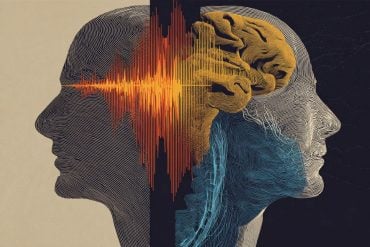Summary: Parvalbumin (PV) interneurons in the primary somatosensory cortex (S1) have been identified as key players in encoding pain intensity and driving gamma oscillations, according to a study. Cross-species experiments confirmed that gamma oscillations in S1 selectively reflect pain levels in humans and are linked to PV interneuron activity in rodents.
Optogenetic manipulation of these interneurons demonstrated their ability to modulate pain-related behaviors, solidifying their role in pain processing. The findings establish a direct connection between PV interneurons and gamma oscillations, highlighting their potential as a biomarker and target for pain therapies.
Key Facts:
- Pain Encoding: PV interneurons in S1 selectively encode pain intensity via gamma oscillations.
- Cross-Species Validation: Gamma oscillations linked to PV interneurons were observed in both humans and rodents.
- Therapeutic Potential: Targeting gamma oscillations offers a novel approach for pain management.
Source: Chinese Academy of Sciences
A research team led by Prof. HU Li at the Institute of Psychology of the Chinese Academy of Sciences, has revealed that parvalbumin (PV) interneurons in the primary somatosensory cortex (S1) preferentially encode pain intensity and drive nociceptive-evoked gamma oscillations (GBOs).
Published online in Neuron on January 13, the study fills a longstanding gap in understanding the origins of nociceptive-evoked GBOs and their selective relationship with pain processing across different species.

The findings suggest the potential for using these oscillations as a promising target for therapeutic interventions.
Pain is a major source of human suffering, resulting in economic costs amounting to hundreds of billions of dollars annually. Accurate assessment and effective treatment of pain are critical yet challenging due to the inherently subjective nature of pain.
As a result, researchers have engaged in intense efforts to identify selective neural biomarkers for pain perception.
Previous studies have established that nociceptive-evoked GBOs faithfully encode pain and pain-related behaviors in both humans and animals, suggesting their potential as neural biomarkers.
However, the neuronal mechanisms underlying GBOs have remained poorly understood, limiting the use of GBOs in clinical applications.
To address this problem, Prof. HU and his colleagues conducted a series of cross-species experiments. The experiments featured both nociceptive and non-nociceptive sensory stimuli, a range of neural recording techniques (high-density EEG in humans; and silicon probes and calcium imaging in rodents), and optogenetic methods (both alone and simultaneous with electrophysiology in mice).
Their results confirmed that GBOs in S1 selectively encode pain intensity in humans and are closely linked to spiking activity of PV-positive interneurons in rodents. Calcium imaging indicated that PV interneurons, rather than pyramidal cells, preferentially track pain intensity.
Follow-up optogenetic manipulations demonstrated that activating or inhibiting PV interneurons could alter nociceptive-evoked GBOs and related pain-related behaviors.
By linking PV interneuron activity at the microscopic level to GBOs at the mesoscopic level, this research firmly establishes PV interneurons in S1 as the neuronal basis for GBOs’ role in encoding pain intensity.
“These findings are not only significant for understanding the physiology of cortical nociceptive processing but also have far-reaching implications as GBOs are increasingly recognized as a pain biomarker in clinical practice and drug development,” says Prof. HU Li, corresponding author of the study.
About this pain and neuroscience research news
Author: LIU Chen
Source: Chinese Academy of Sciences
Contact: LIU Chen – Chinese Academy of Sciences
Image: The image is credited to Neuroscience News
Original Research: Open access.
“Neuronal mechanisms of nociceptive-evokedgamma-band oscillations in rodents” by HU Li et al. Neuron
Abstract
Neuronal mechanisms of nociceptive-evokedgamma-band oscillations in rodents
Gamma-band oscillations (GBOs) in the primary somatosensory cortex (S1) play key roles in nociceptive processing. Yet, one crucial question remains unaddressed: what neuronal mechanisms underlie nociceptive-evoked GBOs?
Here, we addressed this question using a range of somatosensory stimuli (nociceptive and non-nociceptive), neural recording techniques (electroencephalography in humans and silicon probes and calcium imaging in rodents), and optogenetics (alone or simultaneously with electrophysiology in mice).
We found that (1) GBOs encoded pain intensity independent of stimulus intensity in humans, (2) GBOs in S1 encoded pain intensity and were triggered by spiking of S1 interneurons, (3) parvalbumin (PV)-positive interneurons preferentially tracked pain intensity, and critically, (4) PV S1 interneurons causally modulated GBOs and pain-related behaviors for both thermal and mechanical pain.
These findings provide causal evidence that nociceptive-evoked GBOs preferentially encoding pain intensity are generated by PV interneurons in S1, thereby laying a solid foundation for developing GBO-based targeted pain therapies.






